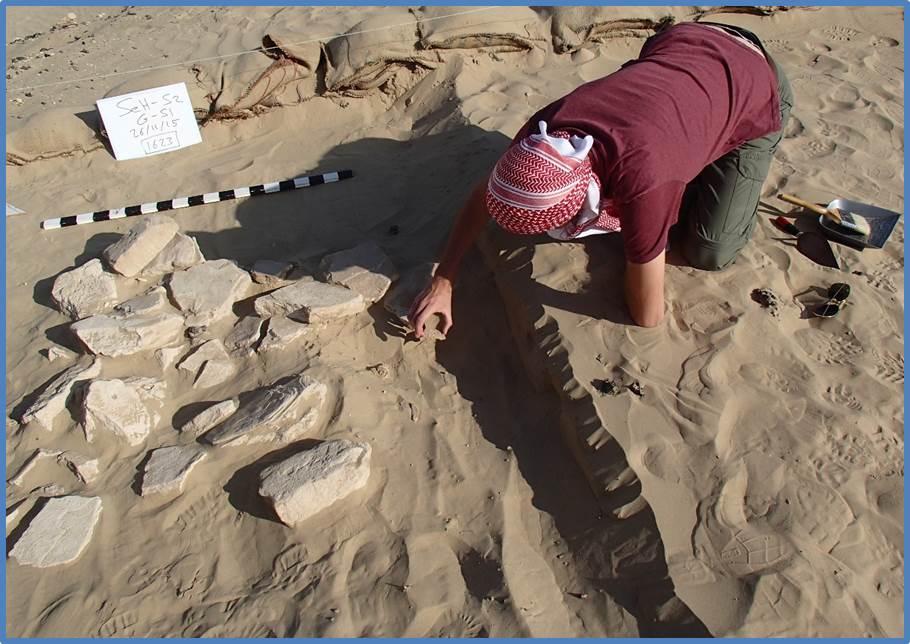“One of the most exciting aspects of academia is the way opportunities can arise out of nowhere,” says zooarchaeology PhD candidate James Roberts, whose studies have so far taken him from a master’s in the UK, to the deserts of the United Arab Emirates, to a PhD at UNE.
James has been undertaking the formidable – but “very exciting” – task of analysing the 1.5 tonnes of animal bone remnants unearthed in an international excavation effort led by UNE’s Professor Lloyd Weeks at the site of Saruq al-Hadid.
The site has proven a hugely rich source of artefacts and remains of human activity from the ancient Arabian civilisation from the Bronze Age and the Iron Age. The bones alone tell a fascinating story.
“The bones demonstrate that during the Bronze Age – around 2000 BCE – humans were using the site as a place to butcher and consume a large number of hunted animals. Their prey was primarily the Arabian oryx,
however they also hunted camel, gazelle, hare, reptiles and even rodents,” James says.
“Later, during the Iron Age, it appears only the skins of the animals were being processed at the site. This tallies with other recovered evidence, which suggests the site was being used as a centre for the manufacturing and exchange of goods during this period.”
The bones have also revealed a few surprises.
“We’ve found evidence that raises questions regarding the domestication of the dromedary camel, an incredibly important animal in the region that changed the course of human history. The remains at Saruq al-Hadid seem to suggest the camel may have been domesticated earlier than previously thought, though we can’t yet say this for certain.
“The most unusual aspect has been the remains of fish and other marine animals, when the site is 40 kilometres away from the nearest coastline! It demonstrates the importance of the marine resource to prehistoric Arabian societies. These marine animals were probably preserved by salting, smoking or drying and consumed as a staple food resource at the site, or fodder for livestock.”
The site of Saruq al-Hadid was discovered in 2003, sparking 12 years of an international excavation effort, including an excavation over three field seasons led by Professor Lloyd Weeks. James says the opportunity to see and study the animal bones from the site is an “incredible privilege,” which began at the excavation during his master’s degree.
“The opportunity to witness artefacts as they are uncovered and to be the first person to interact with the objects in 4,000 years is utterly unique,” James says.
He jumped at the opportunity to follow up this experience with a PhD at UNE with Professor Weeks to study the bones that were uncovered.
At this stage, James hopes to continue exploring the finds from Saruq al-Hadid at UNE after his PhD, however zooarchaeology has taught him that, just like beneath the desert’s surface, other exciting things may await.
“Our studies at Saruq al-Hadid have raised a lot of questions, which I would love to be involved in helping answer! But I know other opportunities can arise and lead to things you wouldn’t have considered before. It makes me keep a fairly open mind!”



Recent Comments